I love trying new foods, and deer meat is no exception. As a game meat, it has a unique flavor that sets it apart from more common meats like beef and chicken.
If you’re curious about what deer meat tastes like, you’re in the right place. In this article, I’ll explore the taste, texture, and health benefits of deer meat, as well as how it compares to other meats.
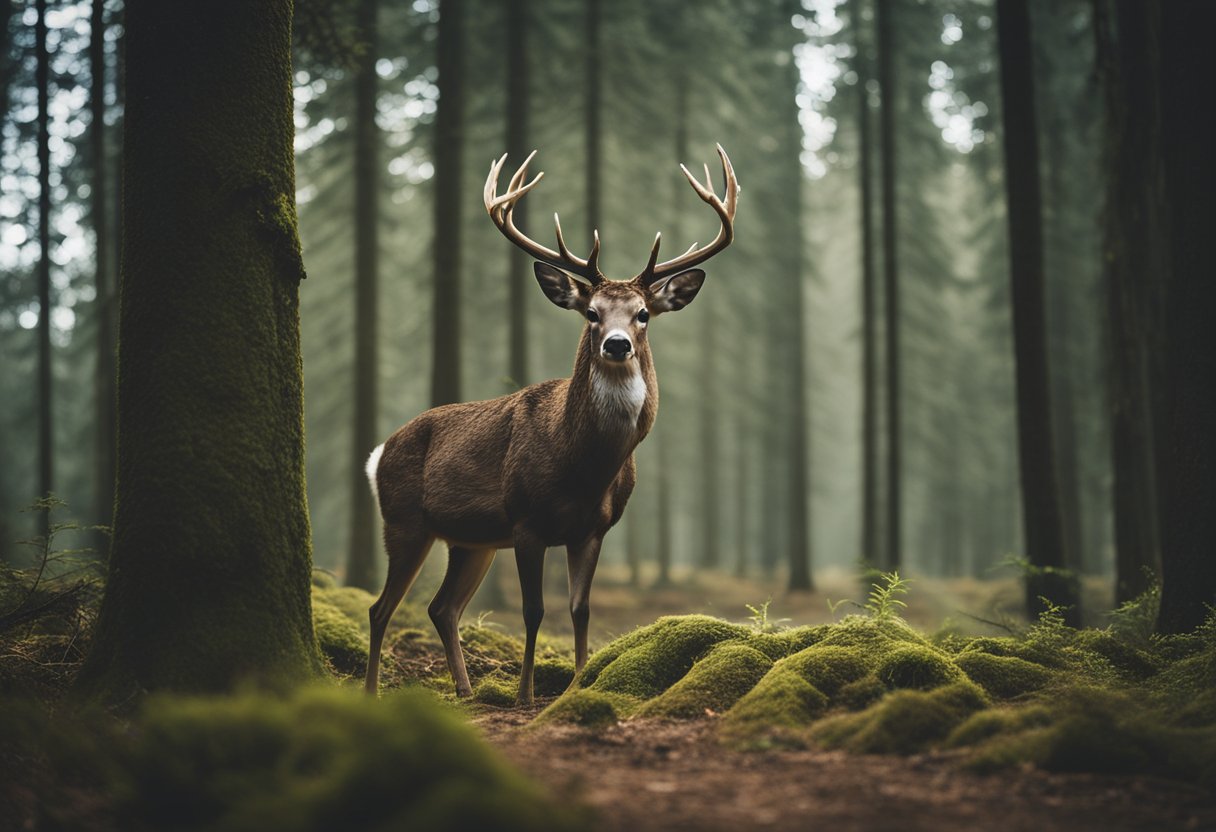
Deer meat, also known as venison, has a rich, gamey flavor that can be described as earthy, nutty, and slightly sweet.
The taste can vary depending on the cut of meat and how it is prepared, but it is generally richer and stronger than beef. Some people even describe it as tasting “festive,” with faint flavors of herbs, sage, and acorn. If you’re looking for a meat that is both flavorful and unique, deer meat is definitely worth a try.
Key Takeaways
- Deer meat has a rich, gamey flavor that is earthy, nutty, and slightly sweet.
- The taste can vary depending on the cut of meat and how it is prepared, but it is generally richer and stronger than beef.
- If you’re looking for a meat that is both flavorful and unique, deer meat is definitely worth a try.
Understanding Deer Meat
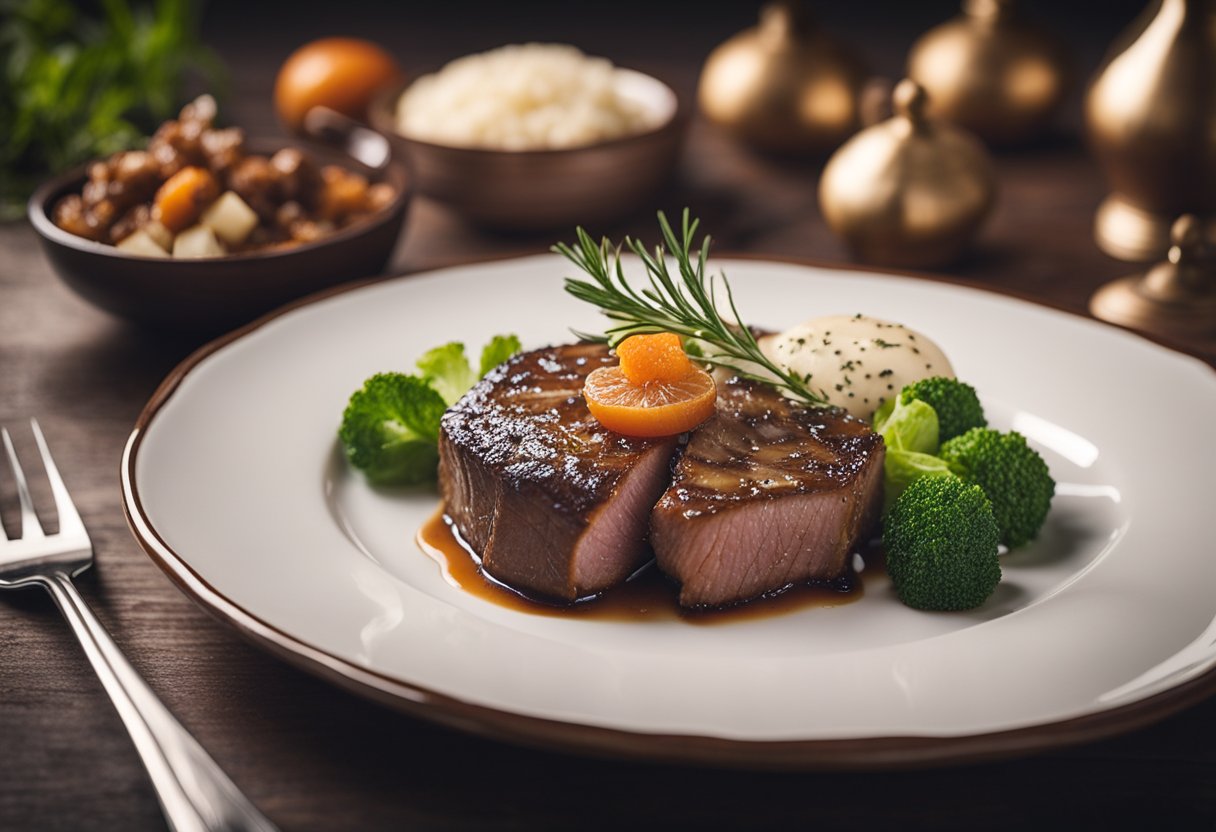
Deer meat, also known as venison, is a type of red meat that comes from deer. It is a popular choice among hunters and those who enjoy wild game. Venison can be obtained from both free-range and farm-raised deer.
One of the primary factors that affects the taste of deer meat is the animal’s diet. Wild deer typically feed on a variety of wild vegetation, which can impact the flavor of the meat. In contrast, farm-raised deer may be fed a specific diet, which can result in a more consistent flavor.
Despite being a red meat, deer meat is relatively low in fat and high in protein, making it a healthy choice for those who are conscious of their nutrition. It is also a good source of iron, zinc, and other minerals. Additionally, deer meat contains a variety of amino acids, vitamins, and other nutritional benefits.
When it comes to cooking deer meat, it is important to keep in mind that it can be quite lean. This means that it can easily become tough and dry if overcooked. It is recommended to cook deer meat to medium-rare or medium. Additionally, marinating the meat can help to tenderize it and add flavor.
Overall, deer meat can be a flavorful and healthy choice for those who enjoy red meat. Whether you prefer the taste of wild game or farm-raised venison, it can be a great addition to a variety of dishes.
The Taste of Deer Meat
Deer meat, also known as venison, has a distinct taste that sets it apart from other meats. As a hunter and someone who has cooked and eaten deer meat many times, I can confidently say that the taste of deer meat is unique and delicious.
One of the first things people wonder about deer meat is whether it tastes gamey. The answer is that it depends on the deer and how it was handled.
If the deer was field-dressed and cooled quickly, the meat will have a milder flavor. However, if the deer was not handled properly, the meat may have a stronger gamey flavor.
Deer meat has a rich, earthy flavor that is often described as musky. The flavor can vary depending on the age and diet of the deer, as well as the cut of meat. For example, a deer that has been feeding on acorns will have a slightly nutty flavor.
When cooked properly, deer meat is tender and juicy. It can be prepared in a variety of ways, including grilling, roasting, and sautéing. The key to cooking deer meat is to not overcook it, as it can become tough and dry.
Overall, the taste of deer meat is a unique and delicious experience that every meat lover should try at least once. With its rich, earthy flavor and tender texture, deer meat is a delicious addition to any meal.
Comparing Deer Meat to Other Meats
As a meat lover, I have tried various types of meat, including beef, steak, mutton, chicken, lamb, elk, moose, duck, and deer. I have found that deer meat, also known as venison, has a unique taste that sets it apart from other meats.
When compared to beef, deer meat has a leaner texture and is less fatty. It is also a red meat, similar to beef, but has a distinct gamey flavor that sets it apart. The taste of deer meat can vary depending on the animal’s diet, age, and gender, as well as how it was prepared and cooked.
Mutton, which is the meat from mature sheep, has a strong flavor that is often described as gamey. It is also a red meat, but it is fattier than deer meat. Chicken, on the other hand, has a milder flavor and is a white meat. It is also less fatty than deer meat.
Lamb, which is the meat from young sheep, has a milder flavor than mutton but is still considered a red meat. Elk and moose meat are also red meats and have a similar texture to deer meat. However, elk meat has a distinct gamey flavor, while moose meat has a milder taste.
Duck meat has a rich and savory flavor that is often described as similar to beef. It is also a red meat and is fattier than deer meat. Axis deer and red deer meat have a similar texture and taste to deer meat, as they are all members of the deer family.
In summary, deer meat has a unique taste that sets it apart from other meats. It is a lean, red meat with a distinct gamey flavor that can vary depending on various factors. While it may not be for everyone, it is worth trying for those who enjoy exploring new and unique flavors in their meat dishes.
The Texture of Deer Meat
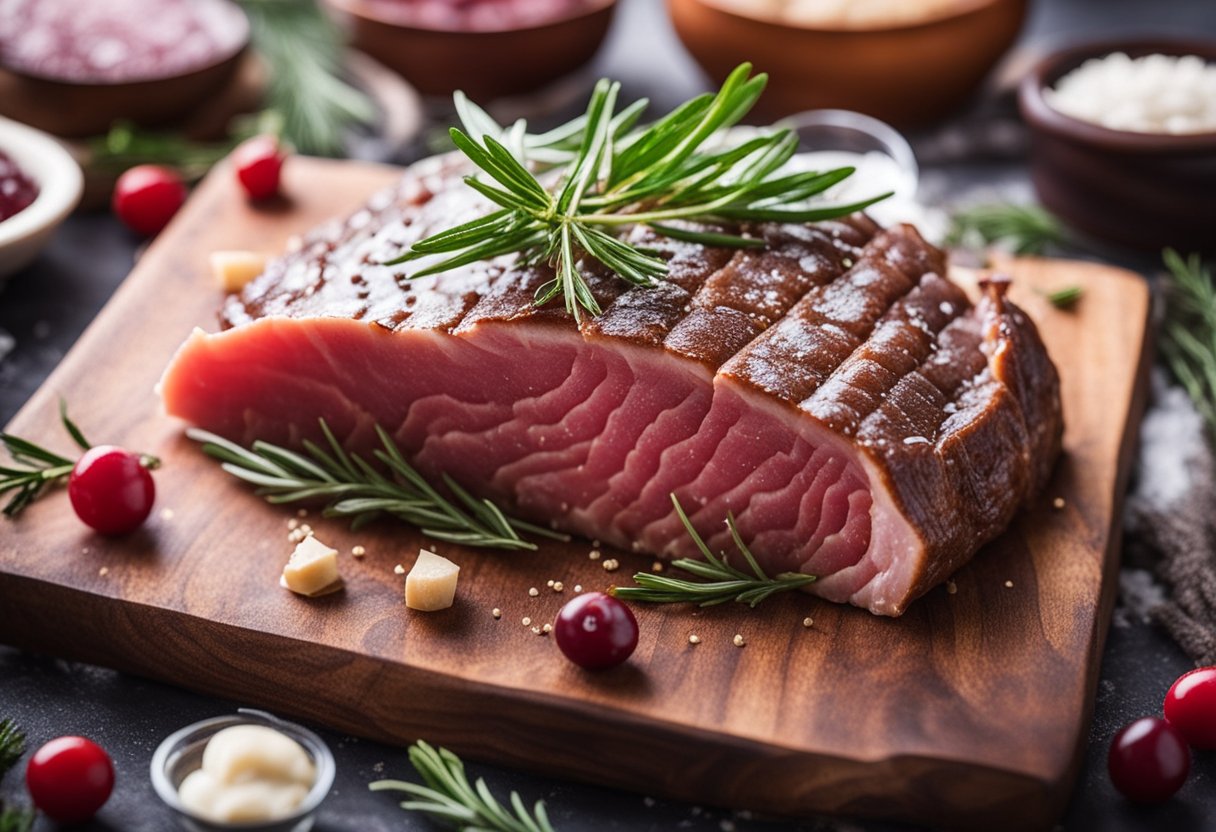
Deer meat has a distinct texture that sets it apart from other meats. It is generally denser and leaner than beef, which can make it a bit tougher. However, it can also be juicier than beef, depending on how it is cooked.
One thing to keep in mind when cooking deer meat is that it is very lean. This means that it can dry out quickly if overcooked. It is important to cook deer meat to the correct internal temperature to ensure that it is both safe to eat and still juicy.
Another aspect of the texture of deer meat is the presence of silver skin and sinew. These are connective tissues that can be tough and chewy if not removed properly. It is important to remove these tissues before cooking to ensure that the meat is tender.
Overall, the texture of deer meat can be described as firm and chewy, but also juicy and flavorful. It is important to handle and cook deer meat properly to ensure that it is both safe to eat and enjoyable to consume.
Influence of Deer’s Diet on Taste
As a hunter and a food enthusiast, I have tasted deer meat from different regions and with different diets. From my experience, I can confidently say that a deer’s diet can significantly affect the taste of its meat.
Deer that feed on acorns, chestnuts, and other nuts generally have a nutty flavor. This is because nuts are high in fats and oils, which can give the meat a rich, savory taste.
Similarly, deer that feed on berries and other fruits may have a sweeter taste. Vegetables and plants can also affect the taste of deer meat, giving it a more earthy or grassy flavor.
On the other hand, deer that feed on grass and mushrooms may have a milder taste. This is because grass and mushrooms are low in fats and oils, which can make the meat leaner and less flavorful.
It is also worth noting that the age and sex of the deer can affect its taste. For example, male deer with antlers tend to have a stronger flavor than females or younger deer. This is because the hormones produced by antlers can affect the taste of the meat.
In conclusion, the diet of a deer can have a significant impact on the taste of its meat. Hunters and food enthusiasts should consider the region and diet of the deer when preparing and cooking the meat.
By doing so, they can enhance the natural flavors of the meat and create a delicious and unique culinary experience.
Cooking Deer Meat
As an avid hunter and cook, I have had plenty of experience cooking deer meat, also known as venison. Venison is a lean and nutritious red meat that is high in protein and low in fat. However, it can be tough and gamey if not cooked properly. Here are some tips for cooking deer meat:
Seasoning and Herbs
Deer meat has a unique flavor that can be enhanced with the right seasoning and herbs. I like to season my deer meat with a combination of salt, pepper, garlic, and onion powder.
Herbs like sage, rosemary, and thyme can also add depth to the flavor. It’s important not to overpower the meat with too many spices, so use them sparingly.
Acidic Ingredients
Deer meat can be tough, so using acidic ingredients like vinegar or lemon juice can help tenderize it. You can marinate the meat in a mixture of vinegar, oil, and herbs for a few hours before cooking. This will not only tenderize the meat but also infuse it with flavor.
Sausage
If you’re not a fan of the gamey flavor of deer meat, you can make sausage out of it. This is a great way to use up the meat and create a delicious breakfast or dinner option. You can add spices like fennel, coriander, and red pepper flakes to the sausage mixture to give it a unique flavor.
Preparing the Meat
When preparing deer meat, it’s important to remove any silver skin or connective tissue. This can be tough and chewy when cooked, so it’s best to remove it before cooking. You can also soak the meat in milk or buttermilk for a few hours before cooking to help remove any gamey flavor.
In conclusion, cooking deer meat can be a delicious and nutritious option if done correctly. By using the right seasoning, acidic ingredients, and preparing the meat properly, you can create a flavorful and tender dish that everyone will enjoy.
Health Benefits of Deer Meat
As someone who has tried deer meat, I can attest to its unique and delicious flavor. But did you know that it also has several health benefits? Here are a few reasons why you might want to consider adding deer meat to your diet:
- Low fat: Deer meat is leaner than beef, pork, and even chicken. This means that it has less total fat and saturated fat, which can be beneficial for heart health.
- Heart-healthy: Not only is deer meat low in fat, but it also contains a good amount of omega-3 fatty acids. These healthy fats have been shown to lower blood pressure and reduce the risk of heart disease.
- Clean: Deer meat is free from antibiotics and hormones, which are often used in the production of other types of meat. This means that you can feel good about eating something that is both natural and clean.
- Parasites: Freezing deer meat can help kill parasites like Trichinella and Toxoplasmosis gondii, which can cause foodborne illnesses. However, freezing does not kill bacteria that cause foodborne illnesses like E. coli or Salmonella, so it is still important to handle and cook deer meat properly.
- Bacteria: While deer meat can contain bacteria like any other type of meat, it is generally considered safe to eat as long as it is cooked to the proper temperature. This means that you can enjoy the unique flavor of deer meat without worrying about getting sick.
Overall, deer meat can be a healthy and delicious addition to your diet. Just be sure to handle and cook it properly to ensure that you are getting all of the benefits without any of the risks.
Deer Meat in Different Cultures
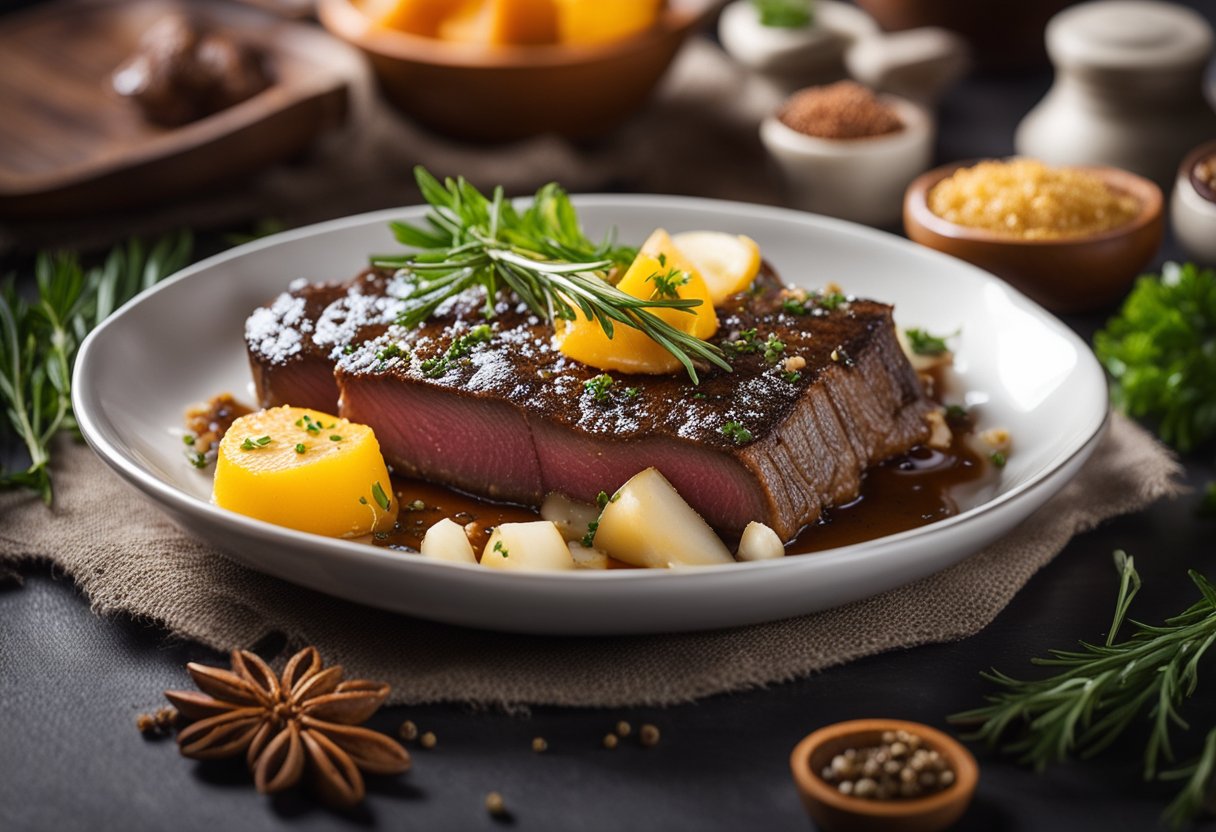
Deer meat, also known as venison, has been a staple food in many cultures around the world for thousands of years. As a result, it has found its way into many traditional dishes in different regions. Here are some examples of how deer meat is prepared and consumed in different cultures:
North America
In North America, deer hunting is a popular sport, and venison is a common meat source for many hunters. Venison chili, venison jerky, and venison burgers are some of the most popular ways to prepare deer meat in the United States.
In addition, deer meat is also used in traditional Native American dishes such as pemmican, a mixture of dried meat, fat, and berries.
Europe
In Europe, deer meat is a popular ingredient in many traditional dishes. In the United Kingdom, venison is often used to make “humble pie,” a savory meat pie made with deer meat, onions, and potatoes. In Germany, venison is used to make sausages, and in France, it is often served as a steak with a red wine sauce.
South America
In South America, deer meat is not as commonly consumed as in other regions. However, in Argentina, where hunting is a popular pastime, venison is often used to make traditional dishes such as empanadas, a type of savory pastry filled with meat and vegetables.
Festive occasions
Deer meat is often consumed during festive occasions such as Christmas and Thanksgiving. In the United States, roasted venison is a popular dish for Christmas dinner, while in Europe, venison is often served during the holiday season with sides such as roasted root vegetables and cranberry sauce.
Overall, deer meat has a rich and gamey flavor that is enjoyed by many people around the world. Whether it’s used in traditional dishes or prepared in new and innovative ways, deer meat remains a popular and versatile ingredient in many cultures.
Cost and Availability of Deer Meat
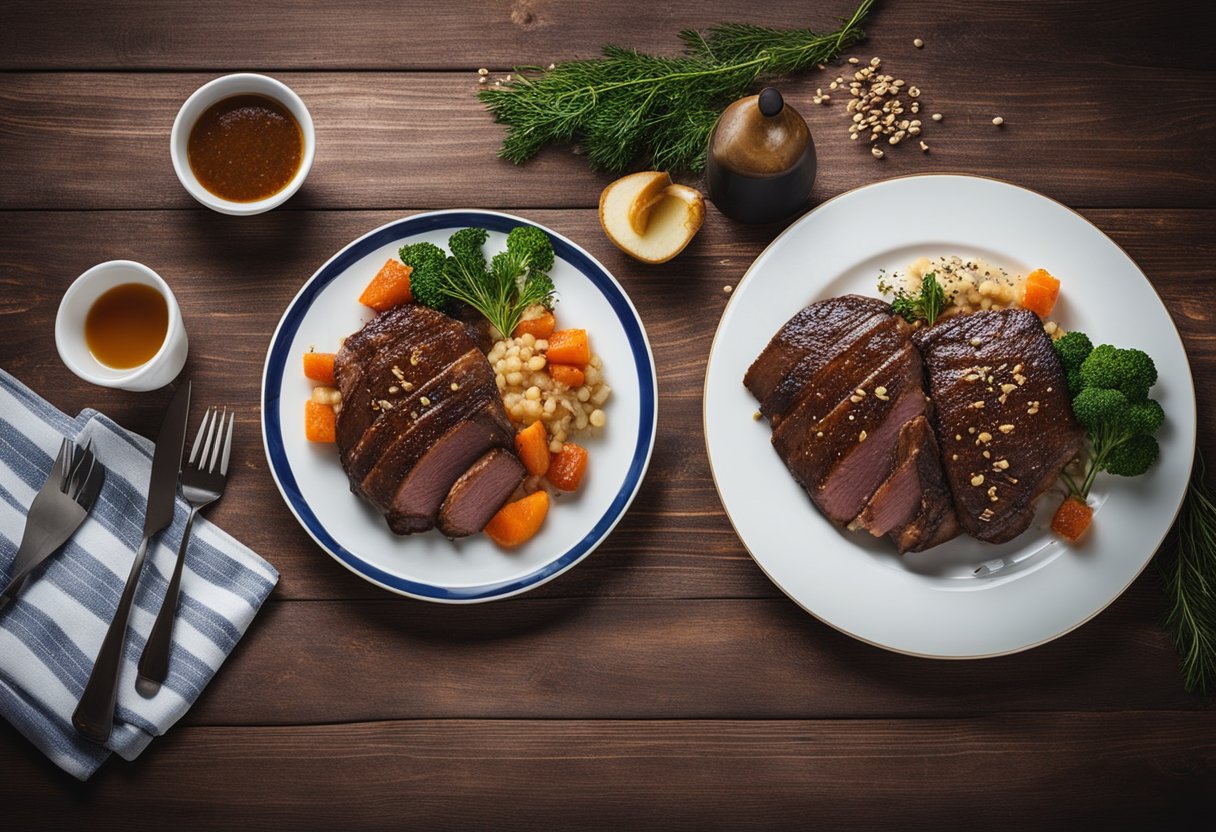
As a hunter, I often get asked about the cost and availability of deer meat. The truth is, it can vary depending on several factors such as the age, sex, and natural availability of the deer.
In terms of cost, deer meat is generally less expensive than beef, pork, or chicken. However, the price can vary depending on the region and availability.
In some areas, deer meat can be purchased at specialty butcher shops or online retailers. On average, the cost of deer meat can range from $10 to $20 per pound.
When it comes to availability, deer meat is typically more abundant during hunting season. The availability of deer meat can also depend on the age and sex of the deer.
Younger deer tend to have more tender meat, while older deer may have tougher meat. Additionally, male deer (bucks) tend to have more gamey meat than female deer (does).
It’s important to note that deer meat is a natural and sustainable source of protein. Unlike factory-farmed meat, deer are free-range animals that live in their natural habitat.
This means that deer meat is free from hormones, antibiotics, and other harmful additives that are commonly found in commercial meat.
Overall, the cost and availability of deer meat can vary depending on several factors. However, it is a natural and sustainable source of protein that can be a great addition to any diet.
Frequently Asked Questions
What is the taste of venison?
Venison, or deer meat, has a distinct flavor that is often described as gamey. It has a rich, earthy taste with hints of sweetness and bitterness. Some people compare it to beef, but it is leaner and has a firmer texture. The taste can vary depending on the age of the deer, what it eats, and how it is prepared.
How does deer meat compare to beef?
Deer meat is leaner than beef, which means it has less fat and fewer calories. It is also higher in protein and iron. However, because it is leaner, it can be tougher and drier than beef. The taste is also different, with deer meat having a more pronounced gamey flavor.
What are some ways to reduce the gamey flavor of deer meat?
There are several ways to reduce the gamey flavor of deer meat. One way is to marinate the meat in an acidic liquid, such as vinegar or lemon juice, for several hours before cooking. Another way is to soak the meat in milk or buttermilk overnight.
This can help to tenderize the meat and remove some of the gamey flavor. Adding strong flavors, such as garlic, rosemary, or thyme, can also help to mask the gamey taste.
Is deer meat considered good to eat?
Yes, deer meat is considered good to eat. It is a lean, healthy source of protein and iron. However, it is important to make sure that the meat is properly cooked to avoid the risk of foodborne illness.
It is also important to follow hunting regulations and guidelines to ensure that the meat is safe to eat.
What is the taste of elk and moose meat?
Elk and moose meat have a similar taste to deer meat, but with a slightly milder flavor. Elk meat is leaner than beef and has a sweet, nutty taste. Moose meat is also lean and has a slightly gamey taste with a hint of sweetness.
How can I make ground venison taste more like beef?
To make ground venison taste more like beef, you can mix it with ground beef or pork. This will add fat and moisture to the meat, making it more tender and juicy. You can also add seasonings, such as Worcestershire sauce or onion powder, to enhance the flavor.







